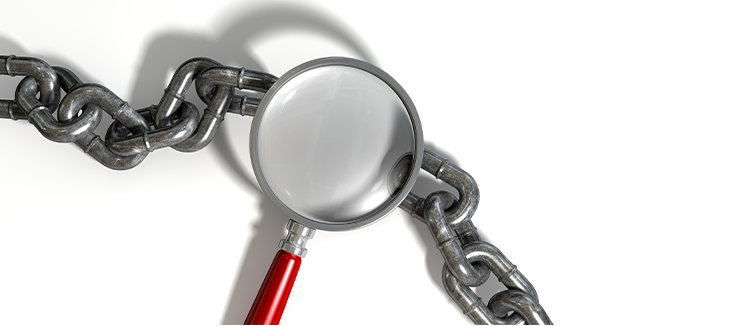Part 2: The Steps to Properly Reprocessing Ultrasound Probes
As explained in part one of this series, best practice requires that all ultrasound probes be high-level disinfected after every use because of their classification as semi-critical devices under the Spaulding Classification system. Reprocessing ultrasound probes is a multi-step procedure that requires attention to detail, precision, and adherence to infection prevention standards. Each step must be executed flawlessly, as even a slight miscalculation can lead to the risk of infection transmission, or a healthcare-associated infection (HAI). The reprocessing procedure typically involves the following steps: pre-/bedside cleaning, cleaning, rinsing, drying, high-level disinfection, electrical leakage testing (for TEE probes), rinsing, and drying.
Step 1: Pre-/Bedside Cleaning
An often overlooked or misunderstood step is pre-cleaning, pre-cleaning, also called bedside cleaning. Because the name is so similar to the next step, many believe it to be the same step, but this is a critical error. As the name suggests, bedside cleaning is to be done immediately after the ultrasound probe is removed from the patient with an enzymatic cleaner. After use, the ultrasound probe is covered with biological debris such as gel, mucus, or blood. The purpose of bedside cleaning is to ensure that any fluids and debris on the probe shaft remain moist while the enzymatic cleaner begins to break down bacteria and other debris. Wiping down the soiled probe’s insertion tube with TEEZyme® Enzymatic Sponge Enzymatic Sponge prepares it for the next step.
Step 2: Cleaning
The second step in reprocessing is cleaning. Cleaning the probe ensures that visible contaminants are removed before disinfection can take place. Failure to thoroughly clean the probe can result in a compromised high-level disinfection process, as organic material can shield microorganisms from the disinfectant.
Cleaning involves using an approved enzymatic cleaner to soak the insertion tube in a tub or basin. The probe’s handle and cables must be kept out of the enzymatic bath to avoid damage. The cleaning step must be performed meticulously, as even small remnants of organic matter can interfere with subsequent disinfection.
Step 3: Rinsing
Following cleaning, the ultrasound probe must be rinsed thoroughly to remove any chemical residue. Rinse the cleaned probe with utility water (or better) to remove residual cleaning agents that could interfere with subsequent disinfection. Complete the number of rinses specified by the cleaning agent manufacturer. If not specified, rinse the probe well enough to remove all visible residue/cleaner. If you need to drain and refill the sink/basin for each rinse, the time for rinsing can drastically increase.
Step 4: Drying
Thoroughly dry the device using a single-use, soft, low-lint cloth. Drying is a crucial step to prevent dilution of the disinfectant in subsequent HLD processes and to prevent the growth of microorganisms, especially if there is a delay between probe cleaning and disinfection. Following cleaning, inspect the probe for residual soil and damage. Probes containing residual soil should be cleaned again, while scratched or damaged probes should be separated to be repaired or discarded. Probes needing repair may need to undergo special disinfection and rinsing steps before being sent out for repair.
Step 5: High-Level Disinfection (HLD)
The high-level disinfection process is the most complex and risk-filled step, especially if it is being carried out manually. Manual disinfection is fraught with challenges. Ultrasound probes are immersed in a high-level disinfectant solution for a prescribed time and within a specific temperature range, ensuring that all microorganisms are eliminated. The disinfectant solution must also be tested to ensure it meets the minimum recommended concentration (MRC), and the temperature must be monitored closely.
During manual high-level disinfection, staff must remain vigilant to ensure the probe’s handle does not slip into the disinfectant, and that the proper contact time and temperature are maintained. Additionally, prolonged exposure to the harmful fumes of many high-level disinfectants can pose health risks to staff, leading to irritation, chemical sensitivity, or more severe health outcomes.
Automation, through devices like TEEClean® Automated TEE Probe Cleaner Disinfector and Ethos® Automated Ultrasound Probe Cleaner Disinfector, removes the guesswork from this step, providing a consistent, safe, and reliable solution. They also provide added layers of security for staff as they are equipped with air filters and are enclosed, keeping staff safe from fumes and possible splashes. Automated reprocessors ensure that each probe is disinfected under controlled conditions, reducing the risk of human error and protecting both patients and staff.
Step 6: Electrical Leakage Testing
This step applies exclusively to TEE probes, which are used inside the esophagus. TEE probes are highly delicate instruments, and must be tested for electrical leakage after each use. Even a tiny crack or tear in the probe’s insertion tube could result in electrocution, posing a life-threatening risk to both the patient and the operator.
Electrical leakage testing ensures that the structural integrity of the probe remains intact, and it must be performed every time the probe is reprocessed. Devices like TEEClean allow for this crucial check to be done as the probe is going through reprocessing, saving time.
Step 7: Rinsing
During reprocessing, the probe must be rinsed twice: once after the cleaning step and once after high-level disinfection. The importance of using filtered water during rinsing cannot be overstated, as contaminated tap water can reintroduce harmful bacteria to the probe, defeating the purpose of reprocessing altogether.
Filtered water, such as that used in devices like the TEEClean, ensures that no contaminants are reintroduced during this critical step. TEEClean uses a 0.005-micron water filter, which is 40 times smaller than the CDC’s baseline recommendation, providing an extra layer of protection.
Step 8: Drying
Proper drying is very important which is also repeated after the second rinse. Before disinfection, probes must be dried to prevent dilution of the disinfectant solution. After disinfection, probes must be thoroughly dried to prevent bacterial growth and contamination during storage. Using inappropriate drying methods, such as paper towels or reusable cloths, can lead to tiny scratches, contamination, and the introduction of bacteria from the environment.
Single-use, gamma-irradiated drying cloths like QwikDry ®Ultrasound Probe Drying Cloth are ideal for this step, as they minimize the risk of contamination and protect the probe’s delicate insertion tube.
The Benefits of Automation
The complexity of reprocessing ultrasound probes makes it clear that there are many opportunities for errors—each of which could result in an improperly disinfected probe. Automation offers a reliable solution to these challenges. Automated systems like TEEClean and Ethos streamline the reprocessing procedure, ensuring that each step is performed correctly and consistently every time.
Not only do these systems reduce the risk of HAIs, but they also relieve the stress on healthcare staff who are responsible for reprocessing probes. By using an automated reprocessor, the number of steps required of staff is reduced from the eight above down to just three (i.e. bedside cleaning, loading into the automated reprocessor, and drying upon cycle completion). Automation significantly reduces the workload and can even improve job satisfaction, helping minimize staff turnover rates, which is a major concern in today’s healthcare environment.
By automating reprocessing, healthcare facilities can meet infection prevention standards, protect patients, and support their critical care teams—all while reducing the risk of costly errors and improving overall efficiency.
In today’s healthcare world, reprocessing ultrasound probes is a complex but essential process that carries significant risk if not performed correctly. By understanding the Spaulding Classification system and following stringent reprocessing steps, healthcare facilities can reduce the transmission of HAIs and protect both patients and staff. Automated solutions like TEEClean and Ethos represent a modern approach to reprocessing that not only improves patient safety but also alleviates the pressure on healthcare staff, making reprocessing a safe, seamless, and highly reliable process.


